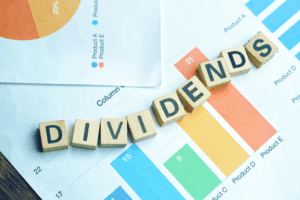Preferred Securities: What They Are and How They Work

He currently researches and teaches economic sociology and the social studies of finance at QuickBooks the Hebrew University in Jerusalem. The total value of assets is $1 billion after paying creditors, bondholders, employees, and the government. SSGA Intermediary Business offers a number of products and services designed specifically for various categories of investors. The information provided on the Site is not intended for distribution to, or use by, any person or entity in any jurisdiction or country where such distribution or use would be contrary to law or regulation. While the shares of ETFs are tradable on secondary markets, they may not readily trade in all market conditions and may trade at significant discounts in periods of market stress.
Noncumulative Preferred Stock
- Preferred stock dividend payments are not fixed and can change or be stopped.
- Though it falls behind prior preferred stock, preference preferred stock often has greater priority compared to other issuances of preferred stock.
- This flexibility can be particularly beneficial during economic downturns or periods of financial instability, as it enables companies to conserve cash and maintain operational stability.
- In exchange, preference shares often do not enjoy the same level of voting rights or upside participation as common shares.
- As shown below, preferreds compare favorably to dividend paying stocks, investment-grade corporate bonds and the broader bond market.
- The board of directors plays a crucial role in determining dividend policies.
Although ETF shares may be bought and sold on the exchange through any brokerage account, ETF shares are not individually redeemable from the Fund. Investors may acquire ETFs and tender them for redemption through the Fund in Creation Unit Aggregations only. The views expressed in this material are the views of SPDR Americas Research through the period ended December 31, 2024 and are subject to change based on market and other conditions. This document contains certain statements that may be deemed forward-looking statements. Please note that any such statements are not guarantees of any future performance and actual results or developments may differ materially from those projected. BetaMeasures the volatility Bookstime of a security or portfolio in relation to the market, with the broad market usually measured by the S&P 500® Index.

Company

Cumulative preferred stock represents a class of ownership in a corporation that has a priority claim on the company’s assets over common stock in the event of liquidation. The primary advantage of cumulative preferred stock is its preferential treatment regarding dividends. Unlike non-cumulative preferred stocks, where dividends are not owed if they are not declared, cumulative preferred stocks accumulate unpaid dividends. This means that if a company skips dividend payments, it must pay them in the future before any dividends can be paid to common shareholders. Investing in non-cumulative preferred stock presents a unique blend of risks and rewards that investors must carefully consider.
- Because preferred shares are often compared with bonds and other debt instruments, let’s look at their similarities and differences.
- The Motley Fool reaches millions of people every month through our premium investing solutions, free guidance and market analysis on Fool.com, top-rated podcasts, and non-profit The Motley Fool Foundation.
- Bank of America has not been involved in the preparation of the content supplied at the unaffiliated sites and does not guarantee or assume any responsibility for its content.
- Preference preferred stock is considered the next tier of stock in terms of prioritization.
- They offer more predictable income than common stock and are rated by the major credit rating agencies.
- This is in contrast to noncumulative preferred stock, which does not accumulate prior unpaid dividends.
Market Trends and Non-Cumulative Preferreds

Thus companies should maintain a balanced capital structure having a proper mix of Equity, Cumulative, and Non Cumulative Preference shares. This helps them manage a balanced investment with a satisfying return to investors and, at the same time, manage with lower cash flows during a financial crisis. Preferred stock ranks ahead of common shares in getting something back if the company declares bankruptcy and sells off its assets. More importantly, preferred stocks are issued with stated dividend rates. If a company is profitable, preferred shareholders collect dividends before common stockholders.
- However, preference shares will generally have lower priority than corporate bonds, debentures, or other fixed-income securities.
- That means it might be harder to buy or sell your preferred stocks at the prices you seek.
- Cumulative is issued as preferred for a company to be able to price their dividends, lower than the current market rate for non-cumulative preferred.
- In exchange, preferred shareholders give up the voting rights that common shareholders enjoy.
- If the corporation chooses not to pay dividends in a given year, investors forfeit the right to claim any of the unpaid dividends in the future.
Non-cumulative Dividends: Everything You Need to Know

The fund may contain interest rate risk (as interest rates rise bond prices usually fall); the risk of issuer default; inflation risk; and issuer call risk. The Fund may invest in US dollar-denominated securities of foreign issuers traded in the United States. Common stock is non cumulative preferred stock often more liquid, with higher trading volumes and easier marketability.
- This investor will want to compare the rates offered on the bond and preferred stock.
- Dividend suspension would mean no shareholders would receive any compensation.
- While preferreds are interest-rate sensitive, they are not as price-sensitive to interest rate fluctuations as bonds.
- Suffice to say, that – as with any investment – it’s critical for individual investors to understand the particular terms and features of the preferred stocks they are buying.
- It is also more constructive than periodic returns, as one can examine outliers.
- Preferreds may be an option for investors seeking some of the highest yields in the investment-grade universe while maintaining overall portfolio diversification.

However, this current year, it decided to skip paying the dividends to the noncumulative preference shares as it has been recording losses for the last few quarters. This way, it aimed at saving some amount to deal with a few other business expenses. Noncumulative Preference Stocks are the stocks that are issued by the companies, but then the issuer may skip or decide not to pay the dividends to the shareholders any longer.

